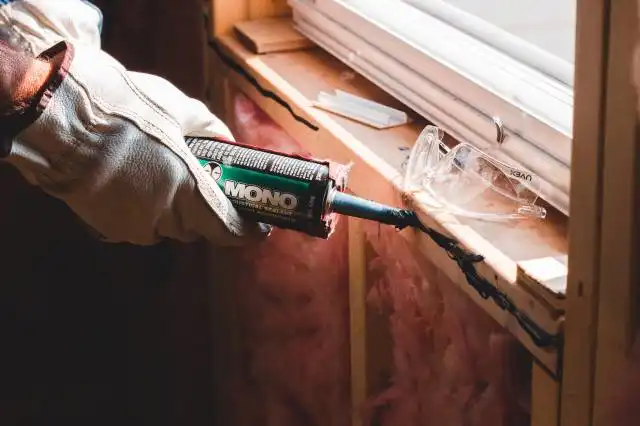Start a Packaging Design Business
Transforming the Mundane Into Must-Haves: Ignite Your Artistic Flame with a Packaging Design Business
| Updated


PACKAGING DESIGN BUSINESS
Unleash your creativity and challenge the bland by venturing into a Packaging Design Business! Imagine this: your artistic talents meeting practicality, crafting enticing containers that turn mundane products into must-haves. In this venture, you'll spend your days designing, prototyping, and revising packages that not only protect goods but also catch the buyer's eye. So, say goodbye to the simple brown box, because your business is here to charm, inform, and inspire with every package manufactured!
Jump to Business Plan
RELATED BUSINESS IDEAS
Browse ALL Arts & Crafts Business Ideas
Discover Your Perfect Domain
Unlock the door to your online success with our hand-picked selection of premium domain names. Whether you're starting a new venture or rebranding an existing one, the right domain can set the tone for your digital presence. Browse through our curated list, each with its unique potential to enhance your brand's visibility and credibility.
PACKAGING DESIGN MINI BUSINESS PLAN
This a quick reality check to help you identify the strengths and weaknesses of your business concept before you dive in.
Business Idea: Packaging Design Business
Expected Percent Margin:
- Gross Margin: 40%-60%
- Net Profit Margin: 15%-25%
Earnings Expectations:
- Daily Earnings: $100-$300
- Weekly Earnings: $500-$1,500
- Monthly Earnings: $2,000-$6,000
- Annual Earnings: $24,000-$72,000
Actions to Hit Those Numbers:
Service Development:
- Pricing Models: Develop affordable and premium pricing models to cater to varied client needs.
- Package Variety: Offer a variety of designs including labels, boxes, bags, and wrappers.
Marketing & Client Acquisition:
- Portfolio: Create an engaging portfolio showcasing your design versatility.
- Website & Social Media: Utilize online platforms for showcasing work and attracting clients worldwide.
- Networking: Attend industry events to network and build partnerships.
Operations & Cost Management:
- Office Space: Consider working from home or renting a small studio to save costs.
- Software: Invest in the necessary graphic design software and keep them updated.
- Suppliers: Establish relationships with printing companies to offer end-to-end solutions to clients.
Business Operations:
- Volume of Work: Aim to take on 3-5 projects a week, depending on the project's complexity.
- Quality & Client Satisfaction: Ensure top-level quality in designs and meet all client expectations.
Please note these are loose estimations and actual figures could be greatly influenced by factors like expertise level, market demand, competition, and operational efficiency. Always work with a financial advisor for detailed financial planning.
NOT WHAT YOU HAD IN MIND? Here are more ideas



Browse ALL Arts & Crafts Business Ideas
Grab Your Business Website Name
Before you get caught up in the whirlwind of setting up your business, invest in a domain name. It's a small but significant step that lays the foundation for your brand and makes it easier for customers to find and trust you. Just like you wouldn't build a house without securing the land first, don't build a business without securing your domain name.
"Why? Can't that wait?" Here's why it shouldn't
Step 1: Determine if Starting a Packaging Design Business is the Right Endeavor
Breakdown of Startup Expenses
Before starting a packaging design business, it is important to understand the costs associated with getting the business up and running. This includes the cost of equipment, software, and other materials needed to create the packaging designs. Additionally, the cost of renting a workspace, registering the business, and obtaining any necessary licenses should be taken into consideration. Finally, the cost of marketing and advertising should be factored in to ensure the business is successful.
Breakdown of Ongoing Expenses
Once the business is up and running, there will be ongoing expenses to consider. This includes the cost of supplies and materials, as well as the cost of maintaining the workspace. Additionally, the cost of hiring employees or subcontractors should be taken into consideration. Finally, the cost of marketing and advertising should be factored in to ensure the business is successful.
Examples of Ways to Make Money
There are several ways to make money with a packaging design business. One option is to offer design services to clients, either on a freelance basis or through a contract. Additionally, the business can offer printing services, such as printing labels or packaging materials. Finally, the business can offer consulting services to help clients create effective packaging designs.
Step 2: Naming the Business
When it comes to naming a business, it is important to choose a name that is memorable, unique, and reflects the values and mission of the business. It is also important to make sure the name is not already in use by another business. To start, brainstorm a list of potential names that reflect the business’s mission and values. Consider the use of puns, alliteration, and other wordplay to make the name stand out. Additionally, research the availability of domain names and social media handles that match the desired name.
Registering the Business Name
Once a business name has been chosen, it is important to register it with the appropriate government agency. Depending on the type of business, this could be the state’s secretary of state office or the county clerk’s office. Additionally, the business name may need to be registered with the Internal Revenue Service (IRS) and the state’s department of taxation. This will ensure that the business name is legally protected and that the business is in compliance with all applicable laws.
Trademarking the Business Name
Once the business name is registered, it is important to consider trademarking the name. This will protect the business name from being used by another business and will also provide the business with exclusive rights to use the name. To trademark the business name, it is important to research the availability of the name and to file the appropriate paperwork with the United States Patent and Trademark Office (USPTO). This process can take several months to complete, so it is important to plan ahead.
Finalizing the Business Name
Once the business name is registered and trademarked, it is important to finalize the name and begin using it. This includes creating a logo and other branding materials, such as business cards and letterhead. Additionally, the business name should be used on all official documents, such as contracts and invoices. Finally, the business name should be used on all marketing materials, such as websites and social media accounts.
Step 3: Develop a Business Plan
When developing a business plan, it is important to include the following components: mission statement, market analysis, organization and management structure, marketing and sales strategy, financial projections, and funding requirements.
The mission statement should include the purpose of the business and the goals you hope to achieve. It should also include the values and principles that will guide the business.
The market analysis should include a detailed analysis of the current market, potential customers, and competitors. It should also include an analysis of the industry trends and the potential for growth.
The organization and management structure should include the roles and responsibilities of the business owners and employees. It should also include the organizational structure and the reporting relationships between the different levels of the organization.
The marketing and sales strategy should include the strategies for reaching potential customers, the methods for promoting the business, and the pricing strategy.
The financial projections should include a detailed analysis of the expected costs and revenues over the next few years. It should also include the expected cash flow and the expected return on investment.
The funding requirements should include the sources of funding that will be needed to start and operate the business. It should also include the amount of capital that will be needed and the timeline for obtaining the necessary funds.
Step 4: Obtain Necessary Licenses and Permits
In order to start a packaging design business, you will need to obtain the necessary licenses and permits. Depending on the state you are located in, you may need to obtain a business license, a sales tax permit, and a zoning permit. Additionally, you may need to obtain a special permit if you plan to sell certain types of products. It is important to research the specific licenses and permits you will need in order to legally operate your business.
Research Requirements
Once you have determined the licenses and permits you need, you will need to research the requirements for obtaining each one. This may include submitting an application, providing proof of insurance, and paying any associated fees. Additionally, you may need to provide proof of identity and proof of residency. It is important to research the requirements for each license and permit before you begin the application process.
Submit Applications
Once you have researched the requirements for each license and permit, you will need to submit the necessary applications. This may include submitting an online application, mailing in a paper application, or visiting a local government office. Additionally, you may need to submit additional documents such as proof of insurance or proof of identity. It is important to submit all necessary documents and applications in a timely manner.
Follow Up
Once you have submitted all of the necessary applications and documents, you will need to follow up with the appropriate government offices. This may include calling the office to check on the status of your application or visiting the office in person. Additionally, you may need to provide additional information or documents in order to complete the application process. It is important to follow up with the appropriate government offices in order to ensure that your applications are processed in a timely manner.
Step 5: Secure Funding
Securing funding for a new business can be a daunting task. However, there are a variety of options to consider when looking for capital. These include traditional financing options such as bank loans and lines of credit, as well as venture capital and private equity. Additionally, crowdfunding platforms such as Kickstarter and Indiegogo can be great options for raising capital. It is important to research all of the available options and determine which is best for your business.
Create a Business Plan
Creating a business plan is essential when seeking funding. A business plan should include an executive summary, a description of the business, an analysis of the market, a competitive analysis, a financial plan, and a plan for marketing and sales. It is important to be thorough and realistic when creating a business plan, as it will be the basis for any potential investors.
Present the Business Plan
Once the business plan is complete, it is time to present it to potential investors. This can be done through in-person meetings, online presentations, or even through a pitch competition. It is important to be prepared and confident when presenting the business plan, as this will be the investor’s first impression of the business.
Negotiate Terms
Once an investor has expressed interest in the business, it is important to negotiate the terms of the investment. This includes the amount of the investment, the timeline for repayment, the ownership structure, and the rights and responsibilities of the investor. It is important to be thorough and ensure that both parties are in agreement before signing any documents.
Step 6: Choose a Location
When choosing a location for a packaging design business, there are several factors to consider. First, it is important to consider the cost of rent and utilities. Depending on the size of the business, it may be necessary to rent a larger space. Additionally, the location should be easily accessible for customers and suppliers. It is also important to consider the local competition and the potential for growth in the area.
Advantages of Working from Home
Working from home is an option for those who are just starting out in the packaging design business. This can be a great way to save money on rent and utilities. Additionally, working from home can provide a more comfortable and relaxed atmosphere. However, it is important to remember that working from home can be isolating and may not be the best option for those who need to collaborate with others.
Advantages of Working from a Co-working Space
For those who need a more professional environment, a co-working space can be a great option. Co-working spaces provide a shared workspace with other professionals. This can be beneficial for networking and collaboration. Additionally, co-working spaces often provide access to shared resources such as meeting rooms and office equipment. However, co-working spaces can be more expensive than working from home, so it is important to consider the cost before making a decision.
Advantages of Working from a Dedicated Office Space
For those who are looking for a more permanent workspace, a dedicated office space may be the best option. This can provide a more professional environment and can be beneficial for networking and collaboration. Additionally, a dedicated office space can provide more privacy and can be customized to fit the needs of the business. However, dedicated office spaces can be expensive and may require a long-term commitment.
Step 7: Obtain Supplies and Equipment
Before you can start your packaging design business, you need to obtain the necessary supplies and equipment. This includes things like a computer, printer, software, and other materials. Depending on the type of packaging design you plan to do, you may need additional supplies and equipment.
Research Suppliers
Once you have identified the supplies and equipment you need, you should research suppliers. Look for suppliers that offer quality products at competitive prices. You may also want to look for suppliers that offer discounts for bulk orders. Additionally, you should research suppliers that offer warranties and guarantees on their products.
Purchase Supplies and Equipment
Once you have identified the suppliers you want to use, you can purchase the supplies and equipment you need. Make sure to read the terms and conditions of the supplier before making any purchases. Additionally, you should compare prices between different suppliers to ensure you are getting the best deal.
Store Supplies and Equipment
Once you have purchased the supplies and equipment, you need to store them properly. Make sure to keep them in a secure location that is free from moisture and dust. Additionally, you should keep track of the supplies and equipment you have on hand so you know when you need to restock.
Maintenance and Upkeep
Finally, you should make sure to maintain and upkeep the supplies and equipment you have. This includes things like cleaning and replacing parts as needed. Additionally, you should make sure to keep up with the latest trends in packaging design so you can stay ahead of the competition.
Step 8: Market Your Business
Once you have your business up and running, you will need to market it in order to attract customers. There are many ways to market your business, including creating a website, using social media, attending trade shows, and advertising in local publications. Creating a website is a great way to showcase your work and attract potential customers. You can also use social media to promote your business and reach a larger audience. Additionally, attending trade shows and advertising in local publications can help you get your name out there and attract more customers.
Tips for Building a Customer Base
In order to build a successful customer base, it is important to focus on customer service. Make sure that you are providing quality products and services that meet the needs of your customers. Additionally, it is important to build relationships with your customers and provide them with excellent customer service. You can also offer discounts and incentives to encourage customers to come back and use your services. Finally, it is important to stay up to date with trends in the industry and use them to your advantage.
Step 9: Hire Employees
When starting a packaging design business, it is important to hire the right employees. It is important to look for employees who have experience in the field and who have a good understanding of the industry. Additionally, it is important to look for employees who have the right attitude and who are willing to work hard. It is also important to look for employees who have the right qualifications and who can help the business grow.
Benefits of Hiring Employees
Hiring employees can be beneficial for a packaging design business. Employees can help with the day-to-day operations of the business, such as designing packaging, managing customer orders, and handling customer inquiries. Employees can also help with marketing and advertising, which can help the business reach more customers. Additionally, having employees can help with the workload, allowing the business owner to focus on other aspects of the business.
Finding Employees
Finding the right employees can be a challenge. It is important to look for employees who have the right skills and experience. Additionally, it is important to look for employees who have the right attitude and who are willing to work hard. It is also important to look for employees who are reliable and who can be trusted to do the job. There are a variety of ways to find employees, such as job postings, online job boards, and networking.
Training Employees
Once the right employees have been hired, it is important to provide them with the necessary training. Training should include an overview of the business, the products and services offered, and the processes and procedures that need to be followed. Training should also include an overview of the industry and the current trends. Additionally, it is important to provide employees with the necessary tools and resources to do their job effectively.
EXPLORE MORE CATEGORIES
Browse ALL Business Idea Categories
TAKE THE NEXT STEPS










